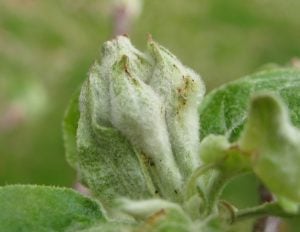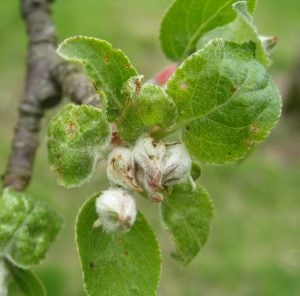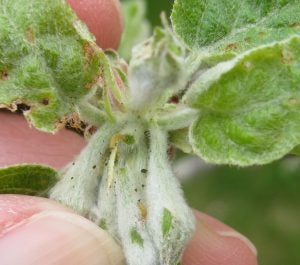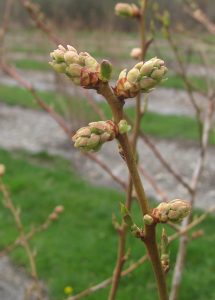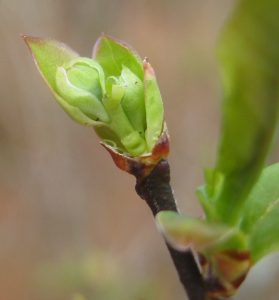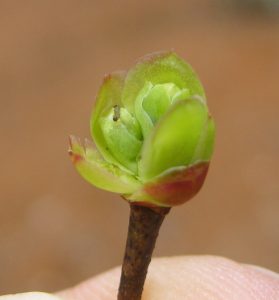Winter moth update April 23, 2019
Winter moth eggs started hatching around April 10. Not many hatched until we received warm weather last week. By Friday, April 19, about half of eggs monitored in Charlestown, RI had hatched and two days later about 95% of eggs had hatched. Things really sped up once warm temperatures occurred. Now and for the next couple of weeks is a good time to look for winter moth caterpillars. I’ve looked in several apple orchards and blueberry plantings over the last two days and the only plants I found needing an insecticide spray are URI’s apple trees and blueberry bushes at East Farm in Kingston. Inside 10 apple flower clusters, every cluster had frass (insect poop) and I found a total of 16 caterpillars. The blueberries were not nearly as infested, finding only 3 out of 10 flower clusters with frass. Since we are over a threshold of 10% infested flower clusters, we are going to spray later this week with a Bt insecticide such as DiPel. About 7-10 days after spraying I’ll reassess the population to see if a second spray is needed. Below are pictures that may help you check your apple and blueberry buds. Using a magnifying glass is helpful!
Fig 1. Apple bud at tight cluster bud stage.
Fig 2. Peeled tight cluster bud showing black specks of caterpillar frass.
Fig 3. Apple buds with lots of winter moth damage.
Fig 4. Apple buds with two caterpillars feeding between buds.
Blueberry buds are more difficult to check than apple buds.
Fig 5. Blueberry flower buds.
Fig 6. Peeled blueberry bud with a little bit of frass inside.
Fig 7. Peeled blueberry bud with a tiny winter moth caterpillar inside.
Questions? Send an email to hhf@uri.edu.
 Home
Home Browse
Browse Close
Close Events
Events Maps
Maps Email
Email Brightspace
Brightspace eCampus
eCampus




